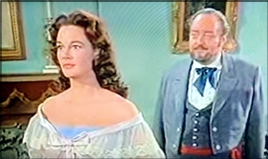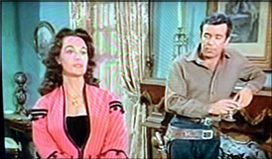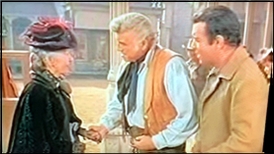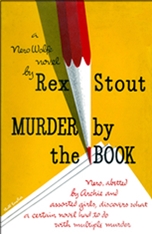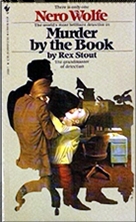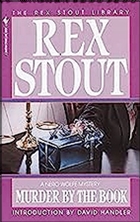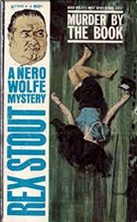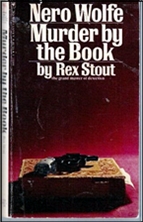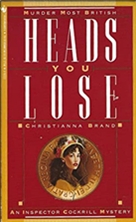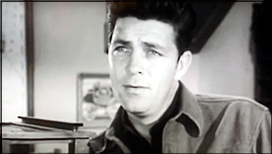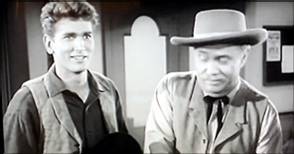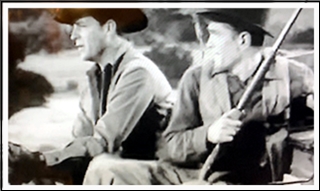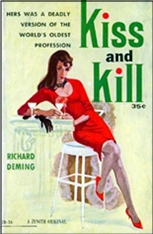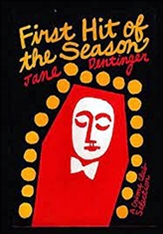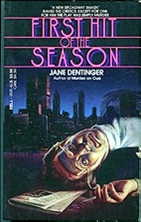Sun 25 Jun 2023
A Crime Novel Review by Tony Baer: ARMITAGE TRAIL – Scarface.
Posted by Steve under Reviews[5] Comments
ARMITAGE TRAIL – Scarface. Edward J. Clode, hardcover, 1930. Dell #D336, paperback, December 1959. Reprinted several times in various editions. Film: United Artists, 1932 (starring Paul Muni & Ann Dvorak; directed by Howard Hawks).

Story of the rise and fall of a Sicilian gang boss in Chicago. And the concurrent rise and rise of his brother to Chief of Police who must stop him! And his sister, seduced by his #1 gunman!
Tony “Scarface” Camonte is a rising star in the Irish mob. Then he pulls a job, killing a rival mob boss, and things get too hot for him at home. So he enlists in the Army in the War to End All Wars (I only recently realized that the reason that Veteran’s Day is always November 11 (as opposed to, say, the second Monday in November), is that it was originally Armistice Day. Armistice literally means to stop fighting. So after the War to End All Wars ended — there of course would never be another war! That’s what the holiday was celebrating! No more war! So anywho, when that name began to get too silly they changed the name to Veteran’s Day, celebrating the armed services rather than the end of war.)
In any case, it turns out that a hitman can make an excellent soldier. He shows real leadership ability during a battle where as a mere Sergeant he is forced to take control of his unit when all of the higher ranking officers are slaughtered. And he makes a good showing of it, winning the battle with strategic, fearless leadership. He’s already seen plenty of life and done plenty of killing before the war — unlike his brother at arms. He’s cool as a cucumber and twice as dangerous (assuming, of course, that the cucumber had botulism (a recent groaner I heard: ‘In the old days plastic surgery was frowned upon. These days when you hear about Botox, no one raises an eyebrow’).
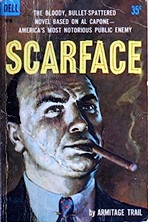
While leading his troop, a shell fragment slices his face, blood pouring out like a turnip. His face forever maimed, he is unrecognizable by even his closest family! (i.e. sis and bro mentioned above).
When he returns to Chicago, he finds out that the papers had reported him a casualty of war and his family’s already grieved his passing. He figures to just go with it, gets a fresh identity, and resumes his path to ‘greatness’. Prohibition is now a thing and all the punks are getting rich. The City is divided into four rival gangs. But each one, like any business, would rather have a monopoly. If you’re not growing you’re dying. So they’re all out to get each other. Scarface deigns to choose to join the mob he figures strongest.
He proves his worth right away, volunteering to sever of the head of their 2nd strongest rival. This he does, in a daring assassination at a fancy gala, in front of the Mayor and all the best people robber and their purchased politicos, everybody who’s anybody.
It’s, to me, the best scene in the novel by a longshot. And it’s where I first learned the importance of a ‘gun girl’. A ‘gun girl’ is a cool, good looking, classy dame, in fancy threads, with silky tone, who carries your gun for you. She hands you the gun when you give her the sign, and she takes it right back when you’re done with it so you can escape unscathed. No evidence in tow.
Here’s how it works:
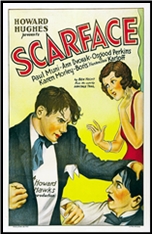
Tony “nodded slightly. She gave him a look of understanding, then, with every appearance of affection, caught his right hand and gently maneuvered it beneath the table. His hand found her knee, rested there. And he thrilled at the contact. But she did not shrink. Then he felt cold steel against his flesh and his eager fingers clutched an automatic. His thumb slipped off the safety catch and he waited. Some woman sang a comic song that made Tony laugh – even in the tenacity of the moment then the chorus came on…the jazz band blared madly….The din was tremendous…..Tony took careful aim and fired three times, so rapidly that the reports almost merged into each other. He saw Hoffman slump forward as he jerked the pistol under the table and slipped it back to Jane. Her fingers were cool and steady as she took it from him.â€
Tony ends up taking over the mob and then taking over the city: the bosses, the cops, the booze, the whores. Til his brother, chief of police, is told to clean the place up.
And the showdown.
—————–
Armitage Trail, the pen name of Maurice Coons, died aged 28 in 1930, the same year he published Scarface and sold the film rights to Howard Hughes for 25 grand. Immediately moving to Hollywood, screenwriter W.R. Burnett relates that Trail drank heavily and lived flamboyantly, getting fat, wearing wide-brimmed Borsalino hats, and hiring a servant, only to die of congestive heart failure in the Paramount Theatre. The only info I found on him was on Wikipedia (if you can call that a source) and this great website I happened upon: https://mysteryfile.com/blog/?p=303
The book is okay but not great — and is soiled by Scarface developing a conscience by the end, naming names and setting the table for a cleanup of the city. I’d put it on par with Burnett’s Little Caesar — the latter which maybe wins by a nose by the protagonist’s consistent immorality. Better than both is Louis Beretti, reviewed here: https://mysteryfile.com/blog/?p=79372
